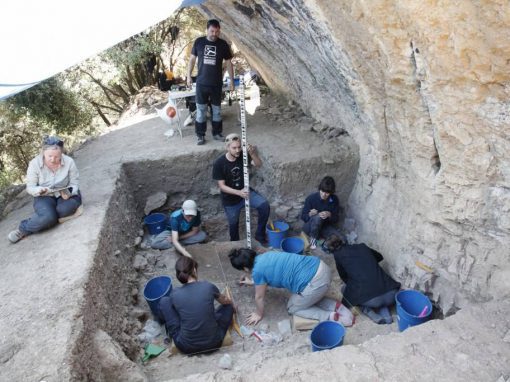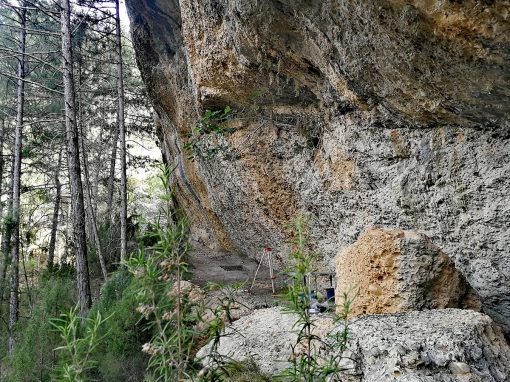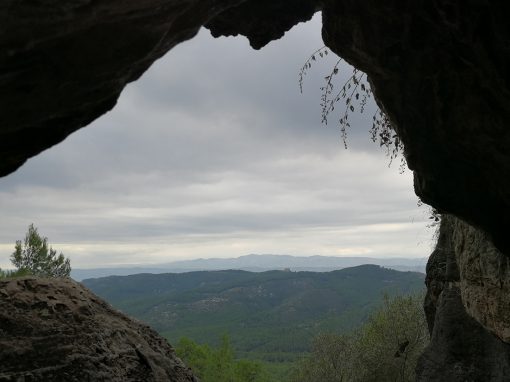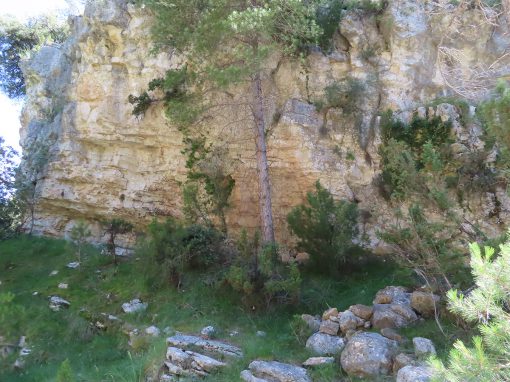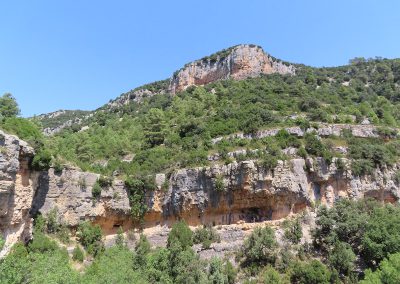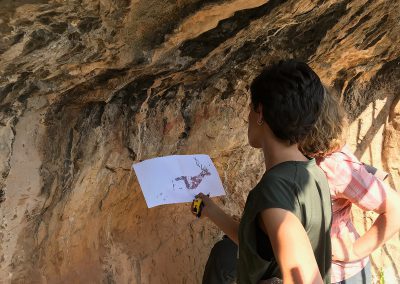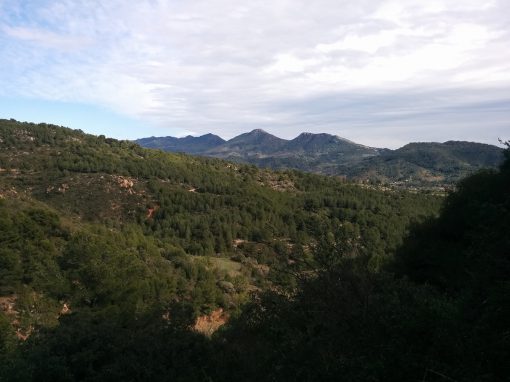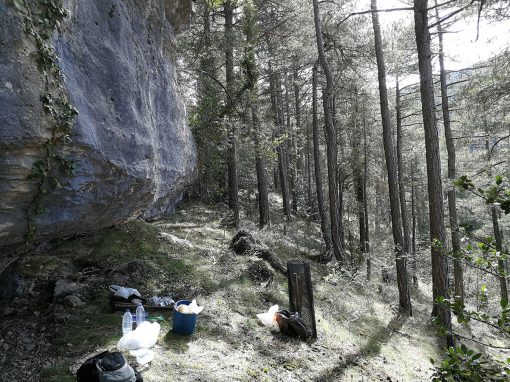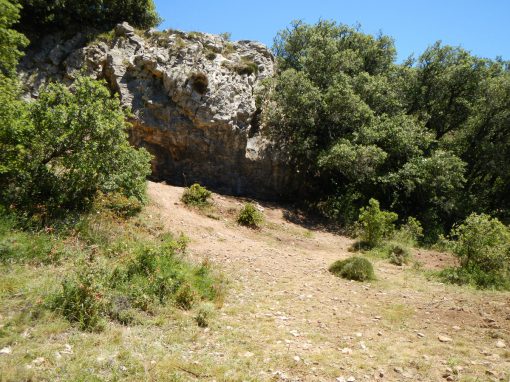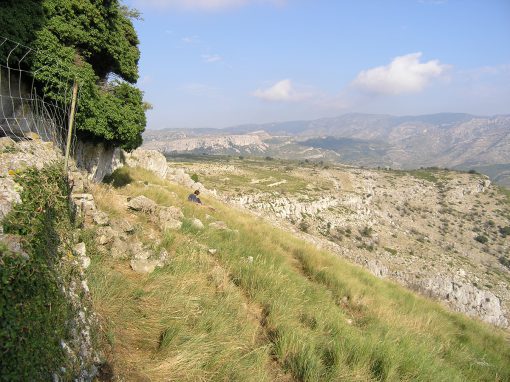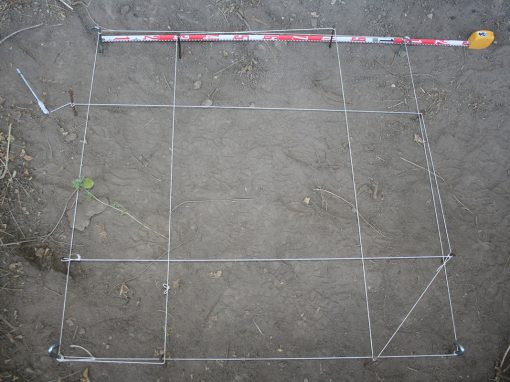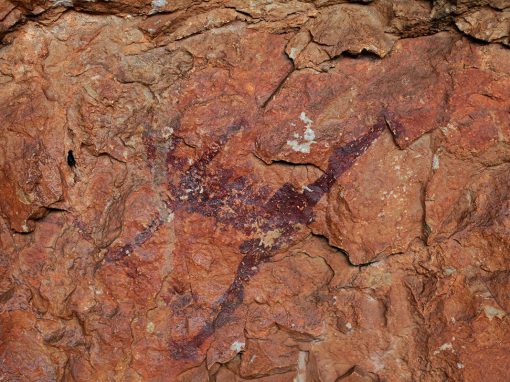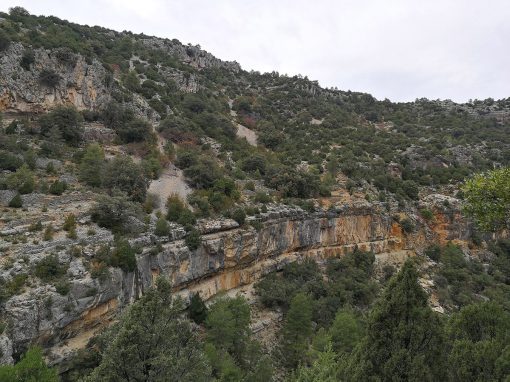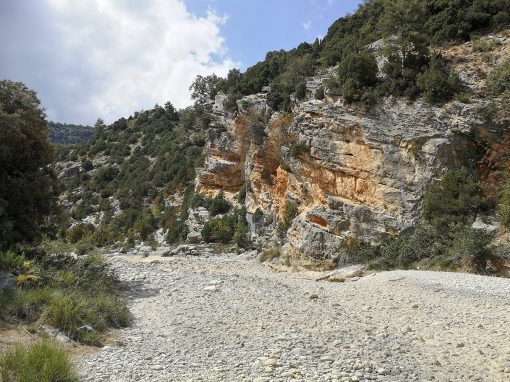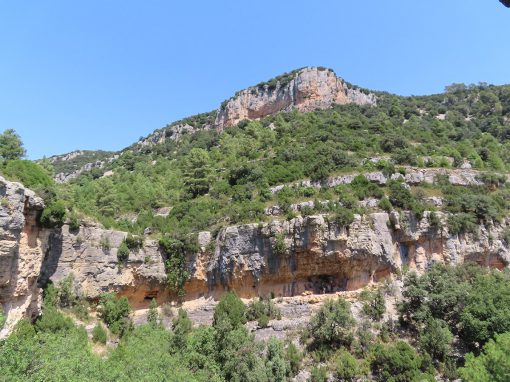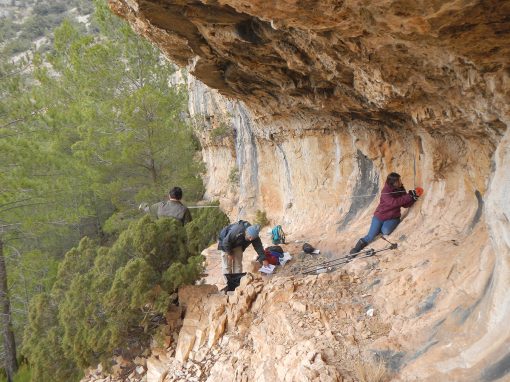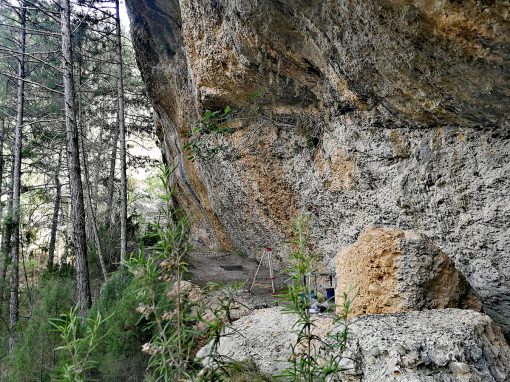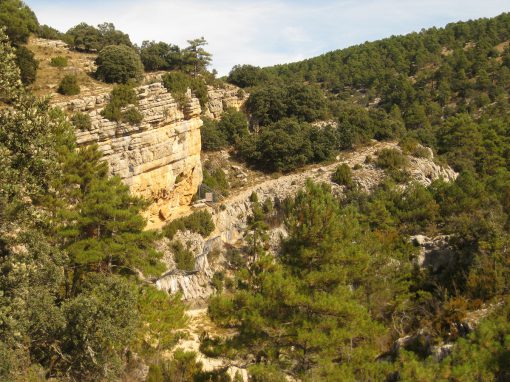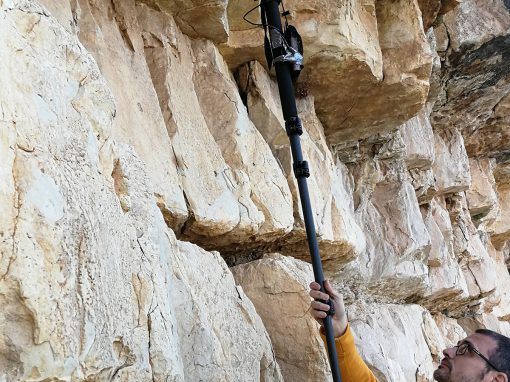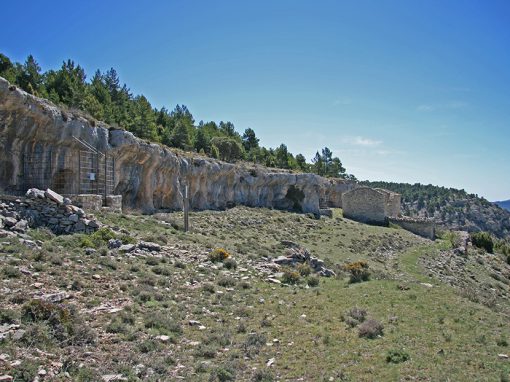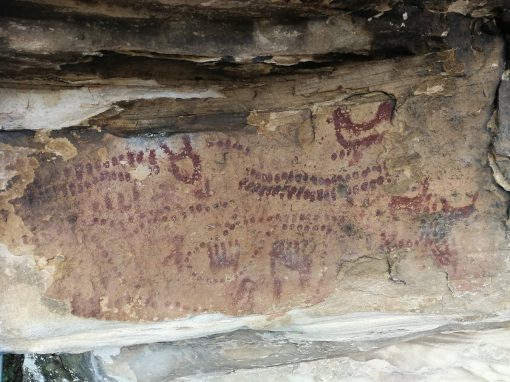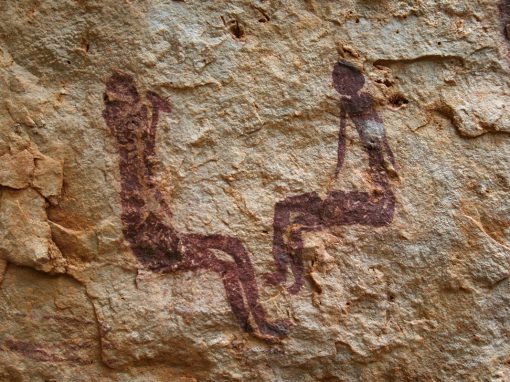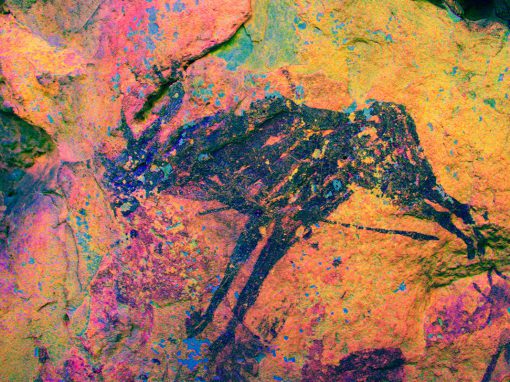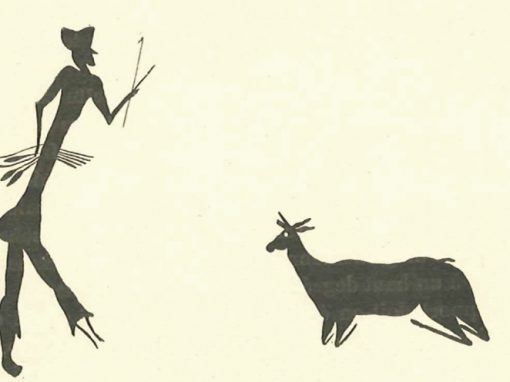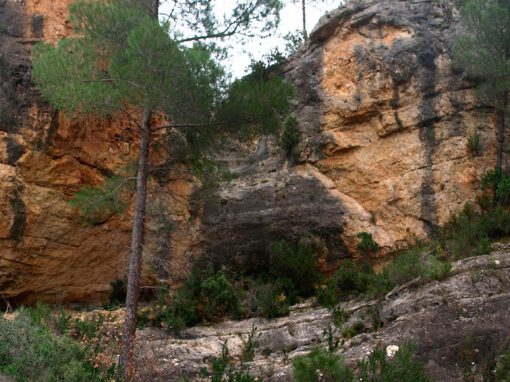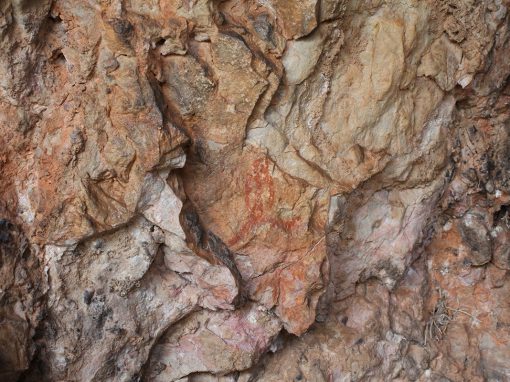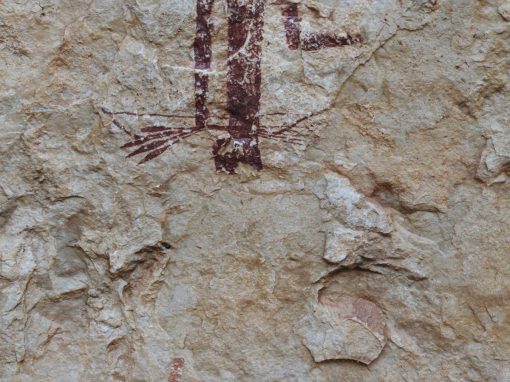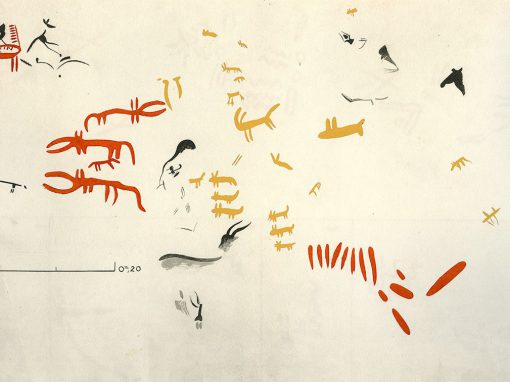Racó de Nando
Town
Benassal (Alt Maestrat, Castelló)
Other names
Els Covarxos
Information
The site consists of a total of seven shelters distributed along a cornice or U-shaped escarpment about 200 m long. This formation opens to the south on the left bank of the Montlleó river, as it passes through the municipality of Benassal (Castelló).
The site was discovered in 1935 by J. Chocomeli, who in 1942 published a brief description of some of the motifs and scenes preserved, including a tracing of the scene in rock shelter VII, which has been the most reproduced and reinterpreted. In 1974 González-Prats studied the site again and offered a more complete inventory of motifs, counting a total of 23. The review carried out by our team in 2019 has allowed us to increase the number of preserved motifs to about 60 painted remains, including 19 human figures, 11 animal representations (five wild boars, four deer, one caprid and one undetermined) and two bows, which must originally have corresponded to human figures that have now disappeared.
This finding is currently under study.
Chocomeli, J. (1942). Las pinturas naturalistas de Els Corvajos, Benassal. En I. Ballester (Ed.), La labor del Servicio de Investigación Prehistórica y su Museo en los años 1935 a 1939: memoria elevada a la Diputación por el Director del S.I.P. (pp. 33-34). Valencia: Editorial F. Domenech.
González, A. (1974). El Complejo Rupestre del «Ríu de Montllor», Zephyrvs XXVI-XXVII, 259-279.
Macarulla; A.; Román, D.; Domingo, I. (2019) Una nueva mirada al arte Levantino de Racó de Nando (Benassal, Castelló). En G. Garcia & V. Barciela (Coords.): Sociedades prehistóricas y manifestaciones artísticas. Imágenes, nuevas propuestas e interpretaciones. INAPH. Universitat d’Alacant
Other similar projects
